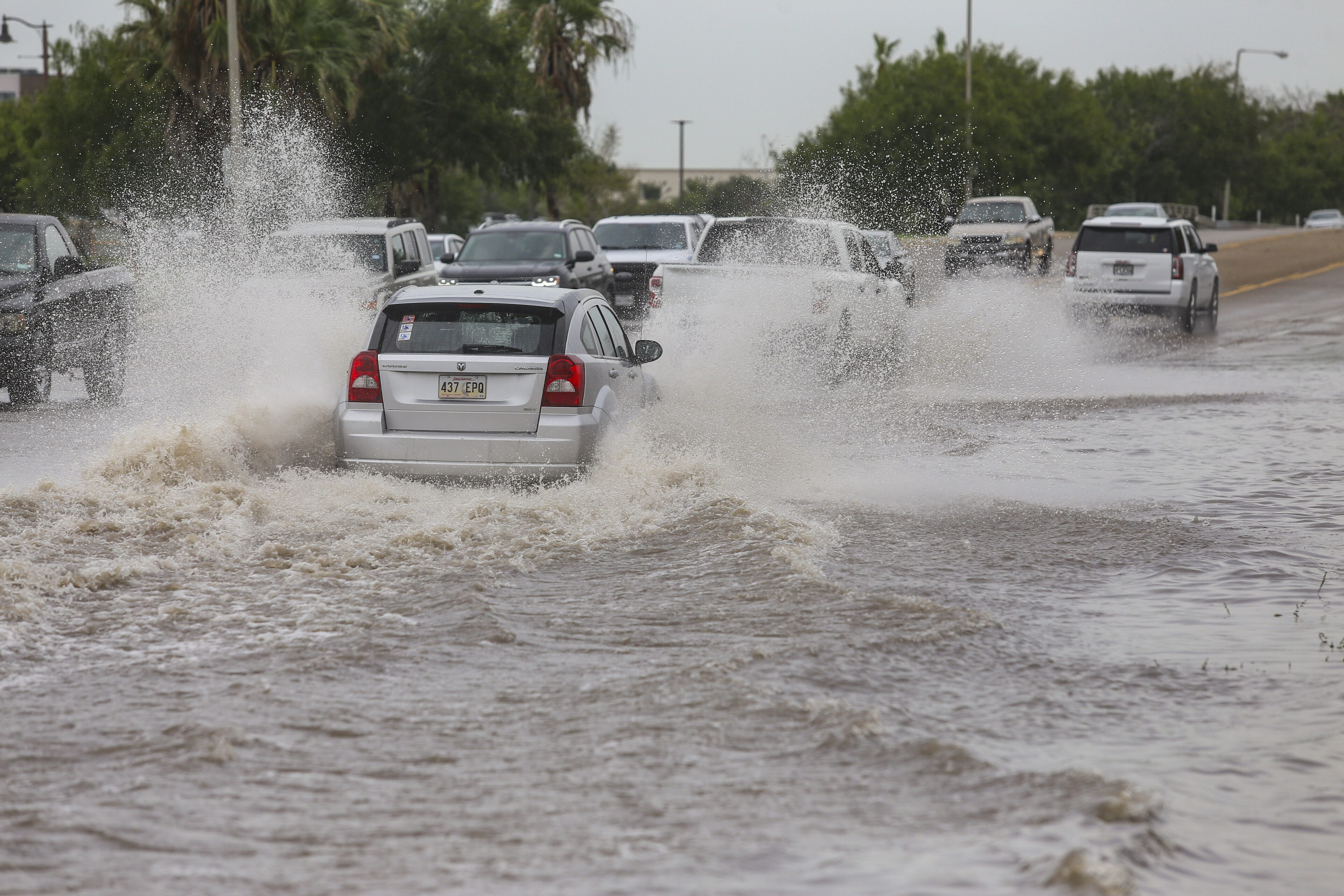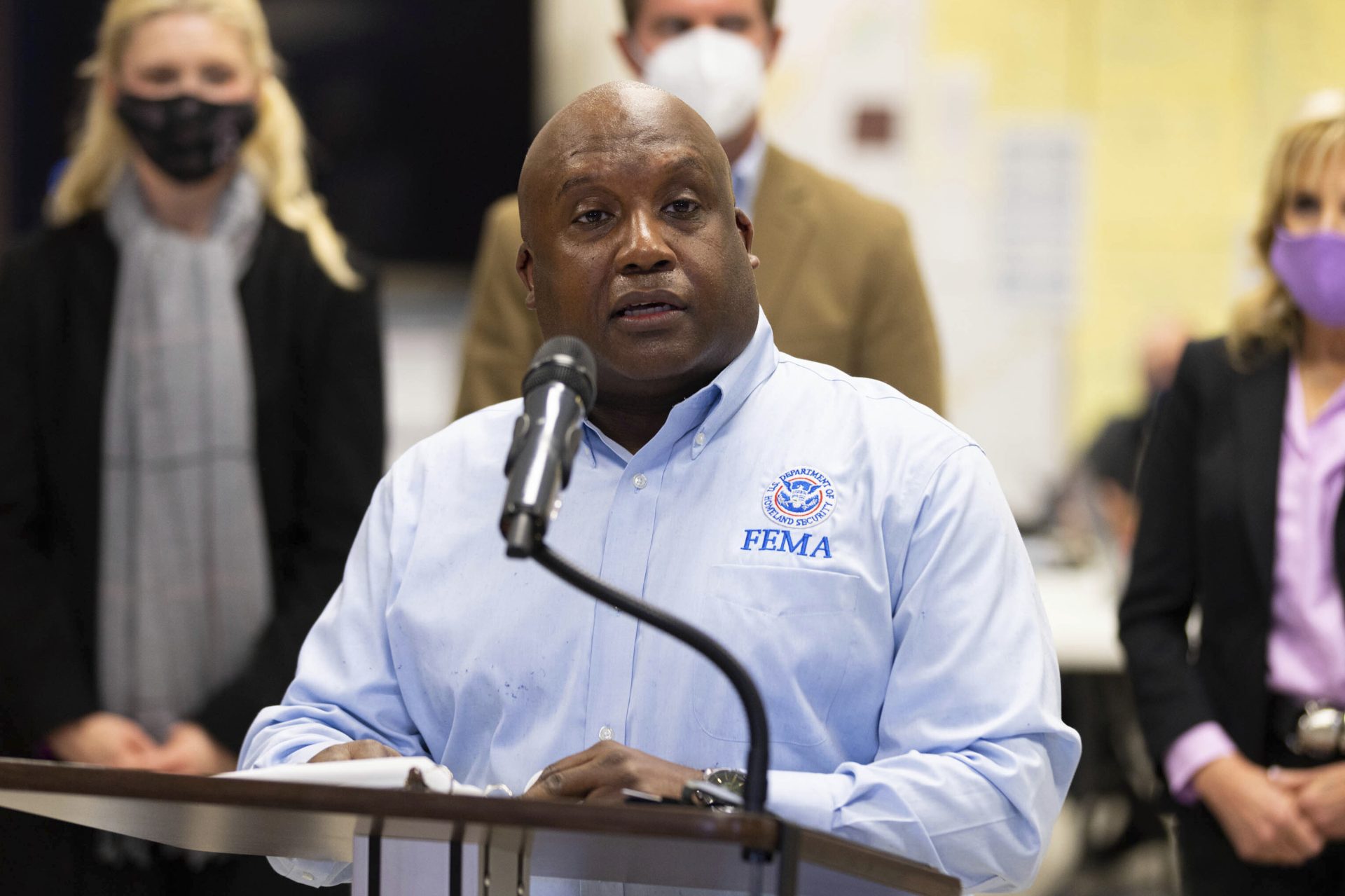We’re barely three weeks into the hurricane season and the Rio Grande Valley already could be facing its first weather-related challenges of the year. Sitting on the edge of the Gulf of Mexico and the mouth of the Rio Grande, the Valley has grown accustomed to such threats. In severe cases, local officials routinely issue disaster declarations that enable residents to seek government assistance with covering the cost of property losses and damage.
Such help is never assured and it usually isn’t enough. This year, however, it likely will be much harder to get it — and that could be the case for the foreseeable future.
The Federal Emergency Management Agency doesn’t have the money. Moreso than ever, it appears that we’re on our own if we have to recover from weather-related losses.
 Vehicles push through deep sections of floodwater Friday, July 9, 2021, on Paredes Line Road near Heritage Trail.(Denise Cathey/The Brownsville Herald)
Vehicles push through deep sections of floodwater Friday, July 9, 2021, on Paredes Line Road near Heritage Trail.(Denise Cathey/The Brownsville Herald)The National Weather Service predicts several days of rains, and perhaps worse, this week. Citing a tropical depression forming in the gulf, the agency has issued a tropical storm warning for coastal counties for the week, with an accompanying flood warning.
Wet weather is a welcome respite from the hot, parched conditions South Texas has endured this year — and for several years. However, too much of a good thing can turn problematic in this flood-prone region. Even without a storm, sustained rain can flood many Valley roads and homes.
Many Valley residents in this low-income region have come to place their hopes on government assistance with helping them repair damaged homes and lost items. Unfortunately, FEMA can’t bail out such residents, unless Congress bails out FEMA first.
That help isn’t assured, especially in this climate of partisan-based gridlock on Capitol Hill. This is the tenth time since 2001 that lawmakers have let the agency run out of funds.
Agency officials say that without immediate help, they’ll be $1.3 billion in the hole by August; by September the deficit is expected to grow to nearly $7 billion.
Meanwhile, FEMA already is dealing with the effects of recent storms in the Houston and North Texas areas and the first major California wildfire of the summer already is raging near the Los Angeles area.
 Deputy FEMA Administrator Erik Hooks delivers remarks at the FEMA State Disaster Recovery Center in Bowling Green, Ky., Friday, Jan. 14, 2022. (Michael Clubb/AP Photo)
Deputy FEMA Administrator Erik Hooks delivers remarks at the FEMA State Disaster Recovery Center in Bowling Green, Ky., Friday, Jan. 14, 2022. (Michael Clubb/AP Photo)FEMA Deputy Administrator Erik Hooks recently told news media that because of the deficit, the agency will prioritize its spending on “life-saving, life-sustaining work” such as fighting fires and rescue operations.
Helping people cover the costs of property losses is not such a priority.
That news is even worse when we consider that in recent years storms have been more frequent and more severe. The National Hurricane Center warns that this season could be unusually active, as many as 25 tropical storms, more than a dozen of them named hurricanes, expected this year.
Moreover, inflation has made the cost of recovering from those storms ever more expensive.
All this is more reason why we can’t trust government to be there when we need help. Valley residents should take this to heart and be extra diligent in planning for any emergency, including bad weather. Protect what you can, insure what you should and be ready to face that when you look for help in the wake of a major storm or flood, it might not be there.
The post Editorial: Amid threat of storm damage, Valley residents need to know: We can’t always rely on FEMA appeared first on MyRGV.com.
 (2).png)
 3 months ago
92
3 months ago
92








 English (US)
English (US)